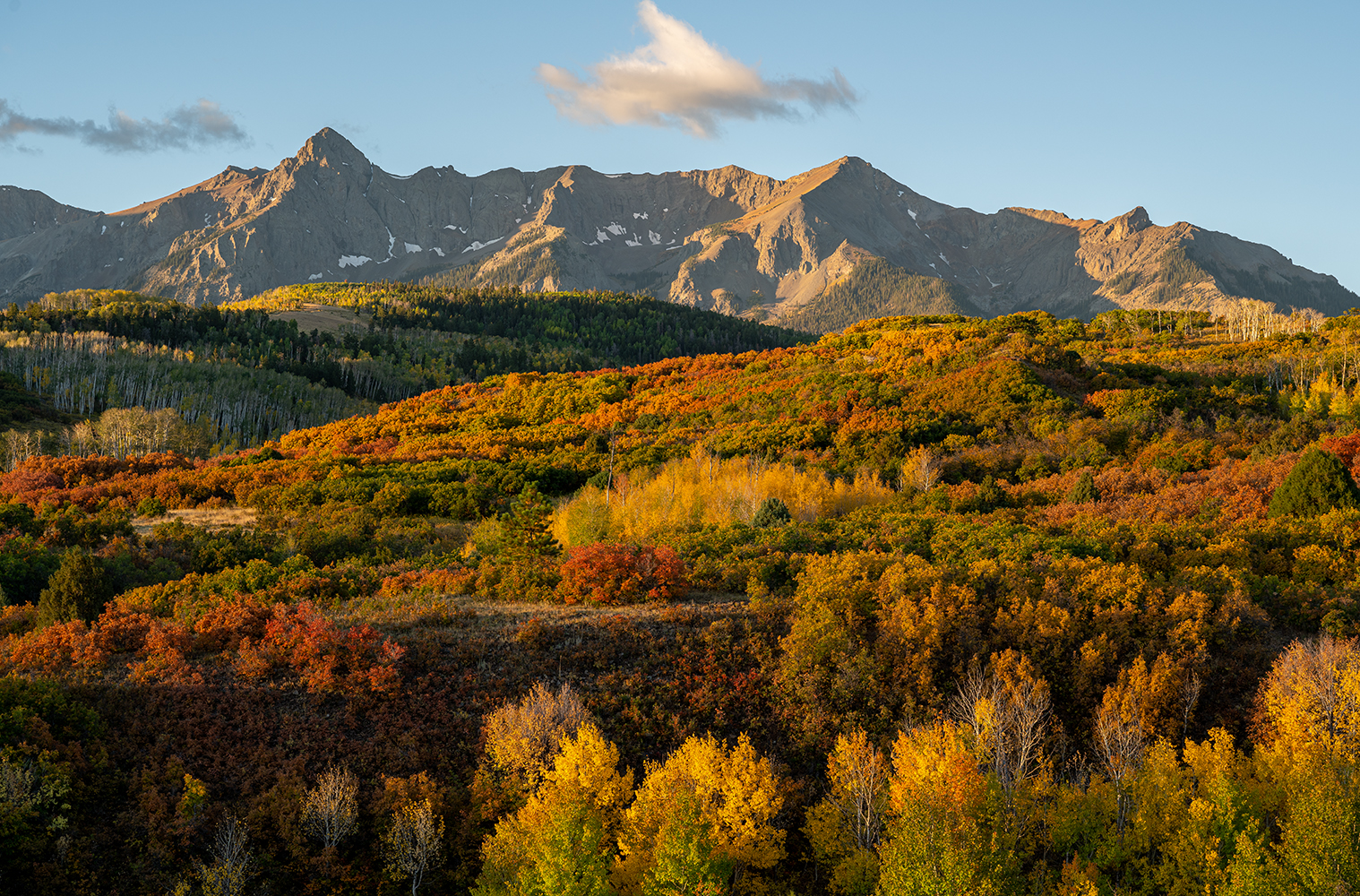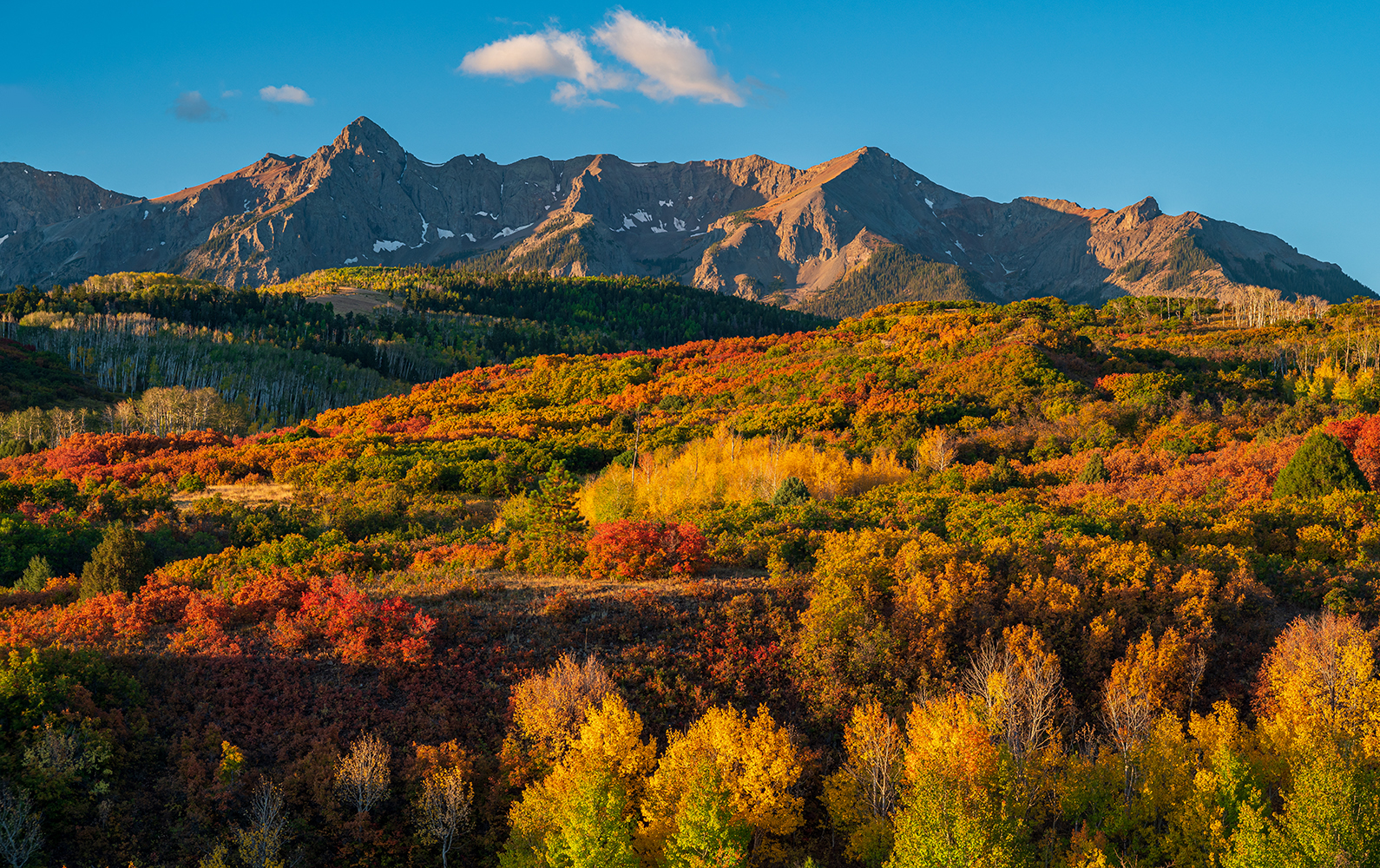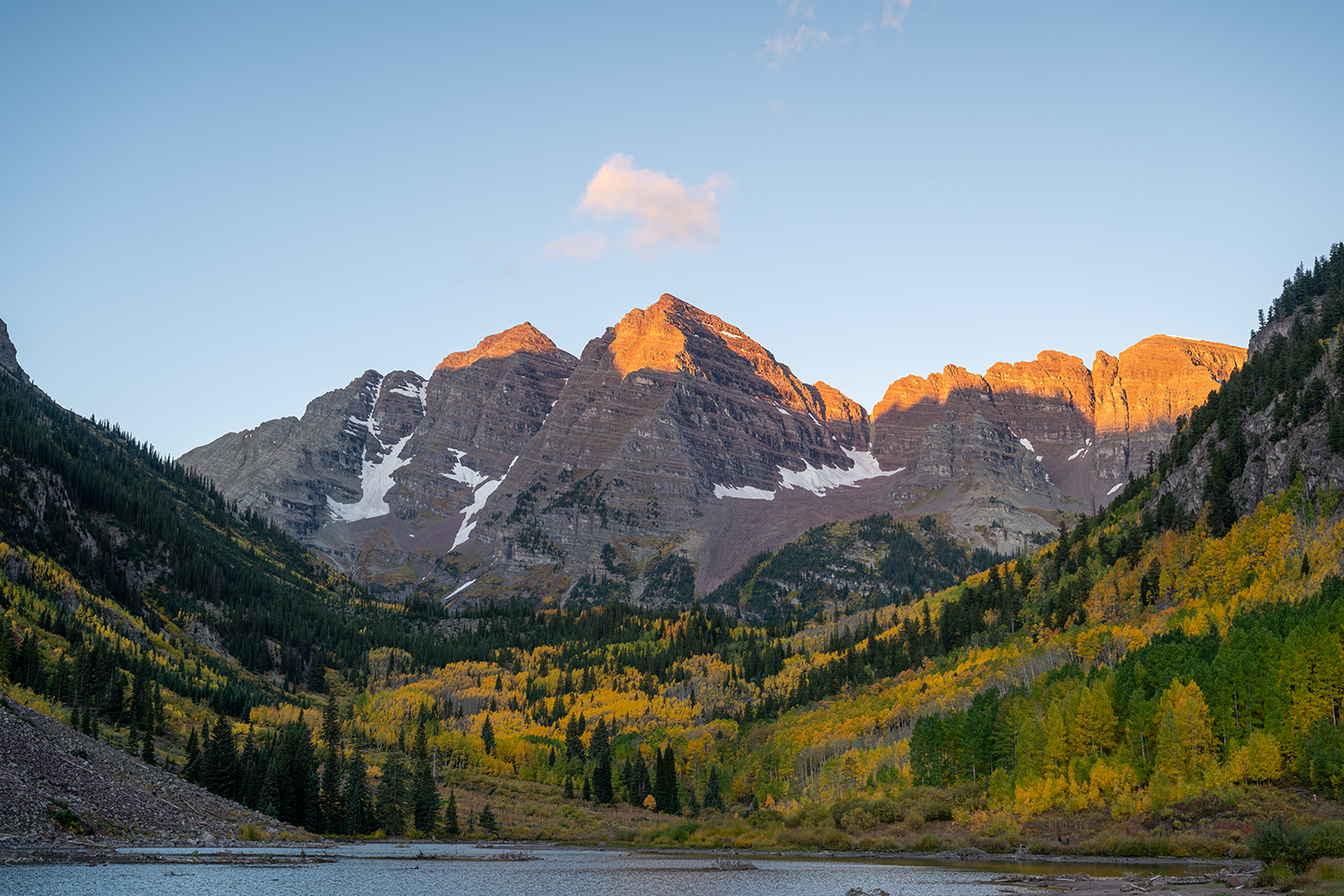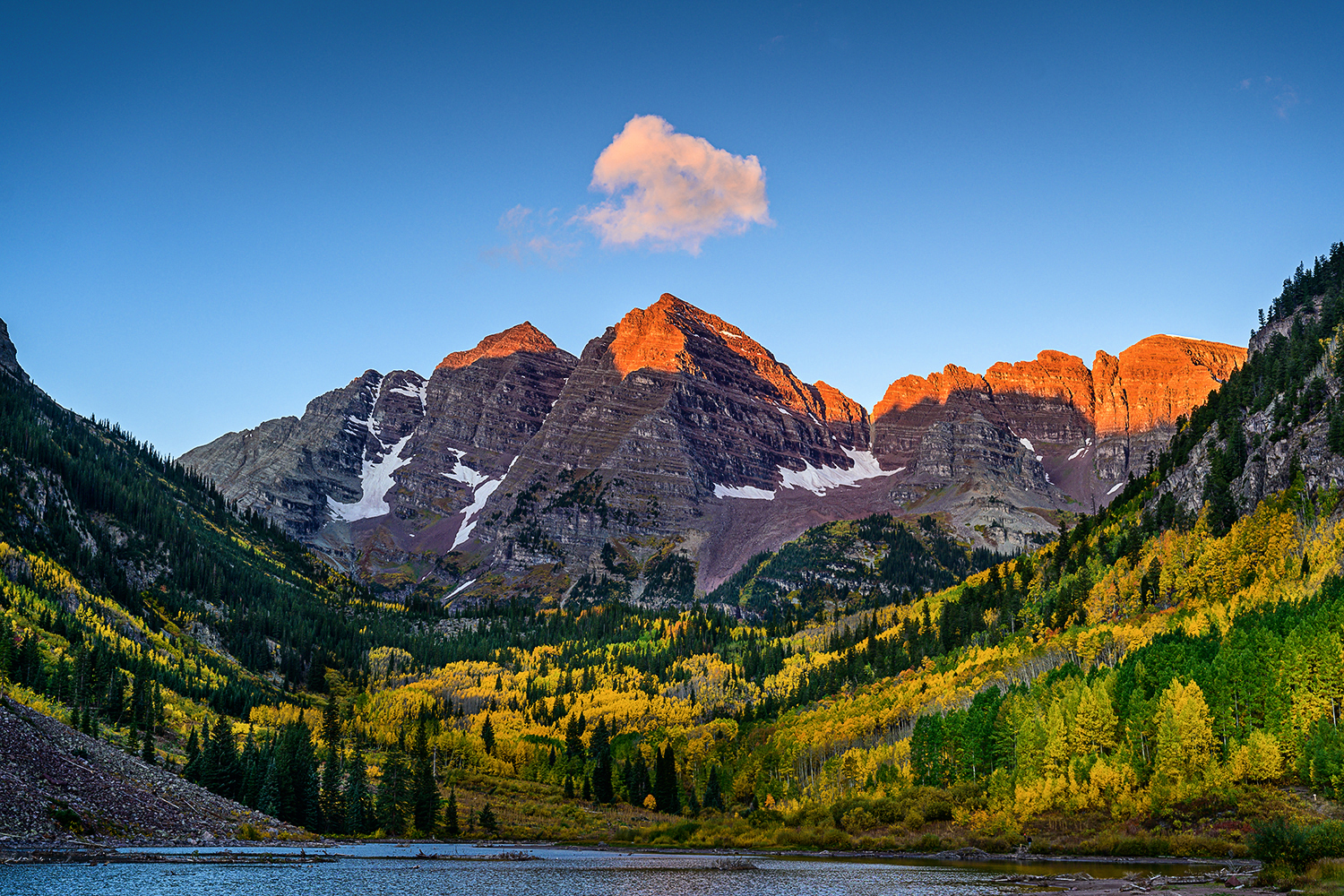Fall is one of my favorite times in Colorado. The temperature cools down, fresh snow coats the mountain peaks, and yellow stands of aspens line the mountain valleys. Right now, I am in the middle of a fall roadtrip photographing some of my favorite locations in Colorado. Fall color is spectacular this year. Not only are the aspens vibrant, but the scrub oak is flaming red and orange.
Whenever I head into the field, I always bring my Singh-Ray filters with me. Honestly, some of the images I have taken in the last few days wouldn’t be possible without using a filter. These filters solve technical problems, improve color and contrast, and create dramatic cloudscapes. The three filters I am using the most on this trip are the Galen Rowell Graduated ND filter, the LB Color Combo Polarizer and the Mor-Slo ND filter. Below is a breakdown of how these filters are helping me create my fall color landscape images this year.
Dallas Divide
This popular spot in located in southwest Colorado near the town of Ridgeway. The mighty San Juan mountains form a jagged ridge of peaks at this location, with Mt. Sneffels dominating the skyline. While aspen is present in this scene, what really makes up the foreground and middle ground is orange scrub oak. This year the aspen was not as colorful, but the scrub oak more than made up for it.
Sunrise is my favorite time to photograph Dallas Divide. The mountains run perpendicular to the sunrise, setting up a perfect situation to use a polarizer. While I could use a neutral polarizer, I really like to use the LB Color Combo Polarizer for fall landscapes. Not only does the filter improve contrast and reduce glare, it also saturates the fall colors in the scene.
Here is my first image. The sun has just risen and is bathing the scene in warm light. But the scene lacks contrast, and needs more color saturation.

Here is the image using my LB Color Combo Polarizer. The scene just comes to life using this filter…right out of the camera, ready to go. I really like how the sky has deeper saturation and the cloud stands out more due to increased contrast.

Maroon Bells
The most iconic mountain scene in Colorado is Maroon Bells. Many people say this is the most photographed mountain vista in the US. One glimpse of these jagged peaks and you will see why they are so popular. Fall is absolutely stunning in the valley. Yellow stands of aspen cover the mountain slopes, perfectly framing the Maroon Bells. What really makes this scene amazing is how the morning light gradually illuminates the top of the peaks. The eastern sun has a clear angle on the mountain peaks. A bright pink curtain slowly scrolls down the Maroon Bells as the sun rises.
And that is the challenge when photographing the Maroon Bells. The sunlit peaks will be much brighter than the valley scene below, creating a huge range in contrast. For this reason, I always bring my Galen Rowell Graduated ND filters with me. My favorite filters are the two stop and three stop soft edge versions. The soft edge works well when placed against a jagged mountain scene; the transition is invisible. I like the 100x150mm version, which gives me plenty of room to move the filter into the perfect position to reduce the highlights.
I arrived two hours before sunrise to secure a good positionfor the shot. Hundreds of people come to photograph this scene in the fall, and this morning was no different. I was hoping for a nice reflection in the lake, but instead the water level was low and the wind was blowing hard. I decided to minimize the lake in the scene and crop tighter on the peaks.
Just as the sun was illuminating the peaks a small cloud formed above the mountain. Perfect! This small cloud really balanced out the scene, and added interest in the sky. But as you can see from the image above, the cloud and sunlit peaks were overexposed in my first shot.

To solve this problem, I used a Galen Rowell Graduated ND 3 stop soft edge filter to tone down the highlights, which allowed the valley floor exposure to be more in line with the sunlit mountain tops. The gradual transition of dark to light of this filter worked well to reduce the highlights without showing the edge of the filter in the scene. I love the rich color and strong graphic qualities of the final image…the cloud really takes this image to the next level.

Crystal Lake
Just above the town of Ouray, Colorado is Red Mountain Pass. This pass has one of the wildest roads you can drive, and also has some of the best aspen groves in southwest Colorado. When I arrived there the aspen were at peak color. I decided to come back the next day and photograph at Crystal Lake. This lake is nicely framed by a valley with aspen on both sides, and Red Mountain is in the background.
When I arrived to photograph the lake, photographers were leaving the scene and heading back to town. The wind was blowing 20-30 knots, and the lake had whitecaps ripping across the water. I decided to make the most of the situation. Rather than wait for a reflection, I decided to embrace the wind and waves. Clouds were zipping past in the sky. I knew if I could slow my exposure down in the midday sun, I could get some dramatic results.
I placed my 10 Stop Mor-Slo ND filter on my lens, set my ISO to its lowest setting, and shot at F22. This resulted in a one-minute exposure. Now the lake water looked silky and mysterious, and cumulus clouds stretched across the scene. I liked these images, but wanted to stretch the clouds even further across the shot.
I decided to shoot a three-frame multiple exposure. Each shot would be one minute long using the 10 stop ND filter, and after firing off three frames in succession, the camera would merge the frames into the final shot. The image above is the result.

I’m still on the road photographing fall color in Colorado. The aspen has one more week before they are past peak. With my Nikon cameras and Singh-Ray filters, I’m going to have a busy week!
